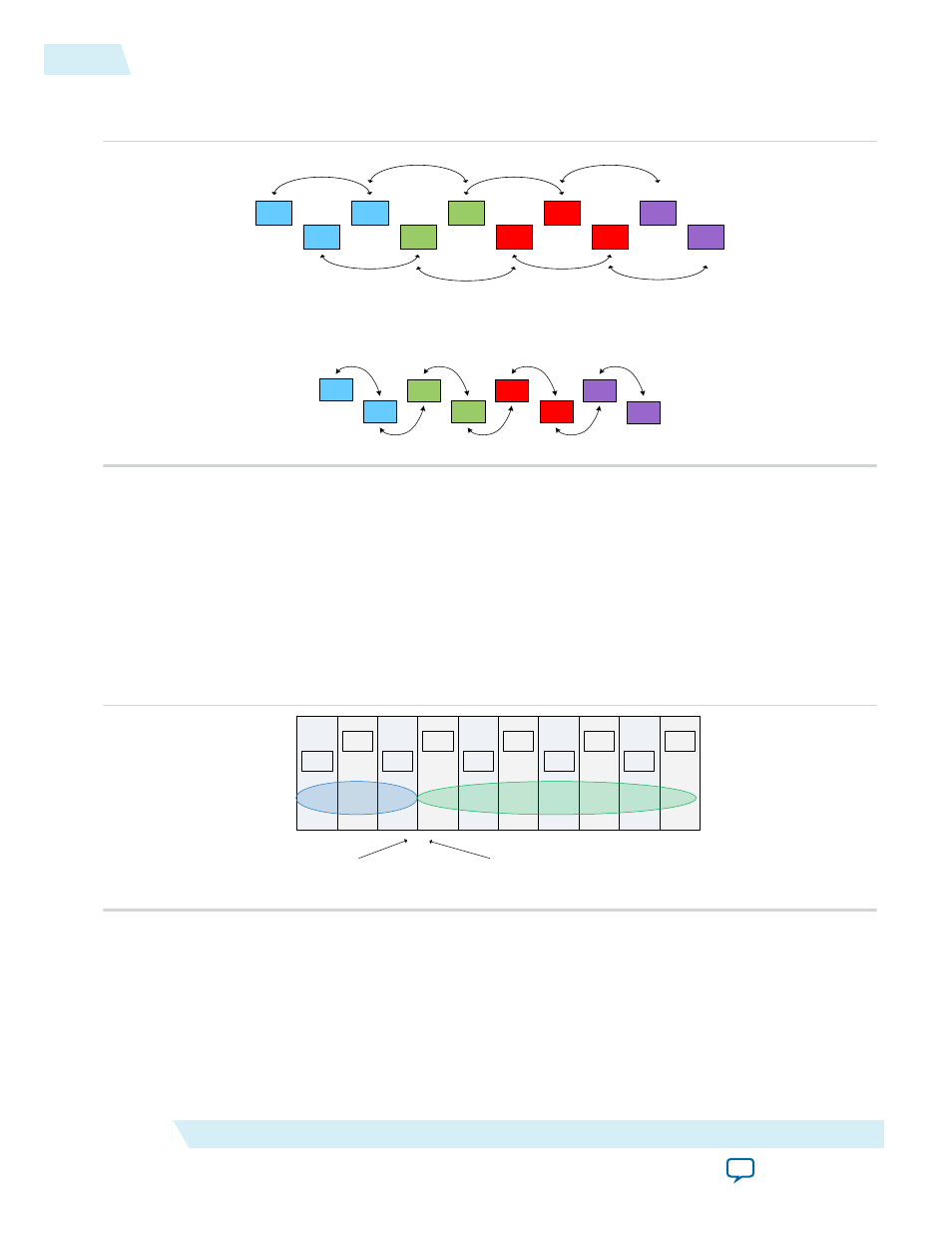Altera Video and Image Processing Suite User Manual
Page 305

Figure B-6: 3:2 Detection and 2:2 Detection Comparison
The figure below shows the comparison between 3:2 and 2:2 detection.
1
1
1
2
2
3
3
3
4
4
2
1
3
4
5
6
7
8
1
1
2
2
3
3
4
4
2
1
3
4
5
6
7
The 3:2 cadence detector tries to detect matches separated by four mismatches. When 3:2 cadence
detector sees this pattern a couple of times, it locks. The 3:2 cadence detector unlocks after 11 successive
mismatches.
After six fields of cadenced video is presented, the 2:2 cadence detector locks. After three fields of
uncadenced data is presented, the 2:2 cadence detector unlocks.
Figure B-7: Weave Current and Weave Past
When the cadence detect component enters a lock state, the deinterlacer continuously assembles a
coherent frame from the incoming fields, by either weaving the current incoming field with the previous
one (weave current) or by weaving the two past fields together (weave past).
3
3
3
4
4
5
5
5
6
6
Cadence detection declares
telecine lock at this point
(after the field was processed)
Scheduler behavior
Normal deinterlacing
Inverse telecine deinterlacing
Normal
deinterlace
Normal
deinterlace
Normal
deinterlace
Weave
past (3)
Weave
past (4)
Weave
past (5)
Weave
past (5)
Weave
current (4)
Weave
current (5)
Weave
current (6)
The deinterlacer starts to use cadence
information to weave fields correctly
If the incoming video contains any cadenced video, you must enable the Cadence detection and reverse
pulldown option. Then, select the cadence detection algorithm according to the type of content you are
expecting. If the incoming video contains both 3:2 and 2:2 cadences, select 3:2 & 2:2 detector.
The cadence detection algorithms are also designed to be robust to false-lock scenarios—for example:
features on adjacent fields may trick other detection schemes into detecting a cadence where there is none.
B-4
Cadence Detection and Reverse Pulldown in the Deinterlacer II IP Core
UG-VIPSUITE
2015.05.04
Altera Corporation
Choosing the Correct Deinterlacer
